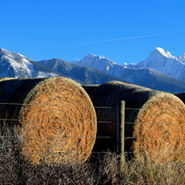

Clastic Dikes at Metaline Falls, WA
Olaf P. Jenkins took these photos in 1924 near Metaline Falls, WA. They show Pleistocene-age clastic dikes intruding rippled...


Pleistocene(?) Alluvial Stratigraphy - Lind Coulee, WA
Non-flood sediments of Pleistocene age are well exposed along Crab Creek in Lind Coulee east of O'Sullivan Dam. Very little has been...


Tetons Drive
Photos from a drive around Teton Valley in November 2021. Mormon Row Jackson Hole Mountain Resort from Spring Creek Snake River from...


Structureless Sandstone Beds - White Bluffs, WA
Structureless sand is fairly unusual in the geologic record. Sandy sediment deposited by flowing water always preserves bedforms....


Diatomite Lake Invaded by Molten Lava - Frenchman Hills, WA
Pillow-palagonite complexes form when molten lava invades a water body and quenches. Pillows are the quenched blobs of lava. Glassy...


Old Maid Coulee Site Geology - Connell, WA
The Old Maid Coulee site, located near Connell, WA, contains convincing evidence of "pre-late Wisconsin" flooding. Geologists distinguish...










